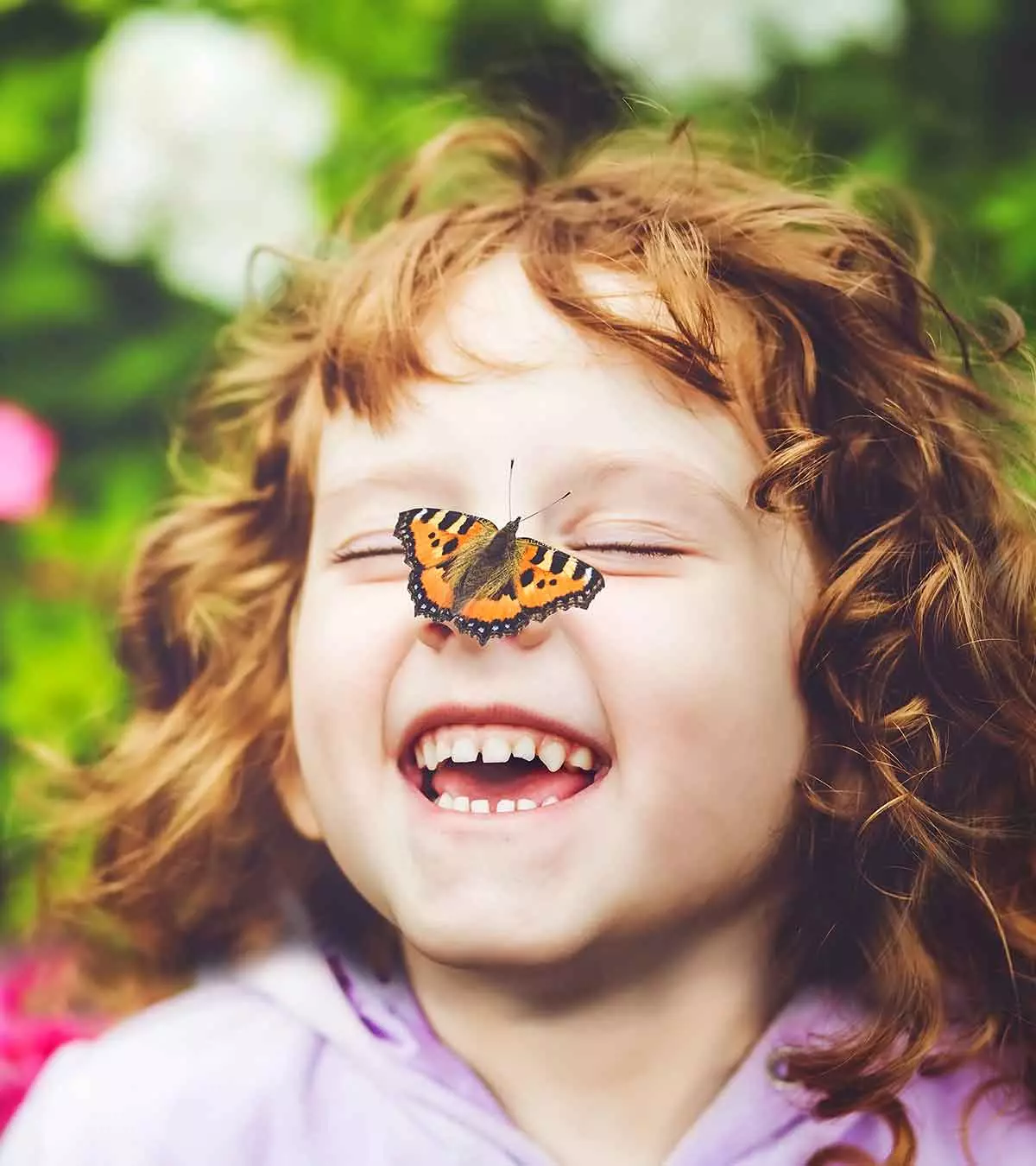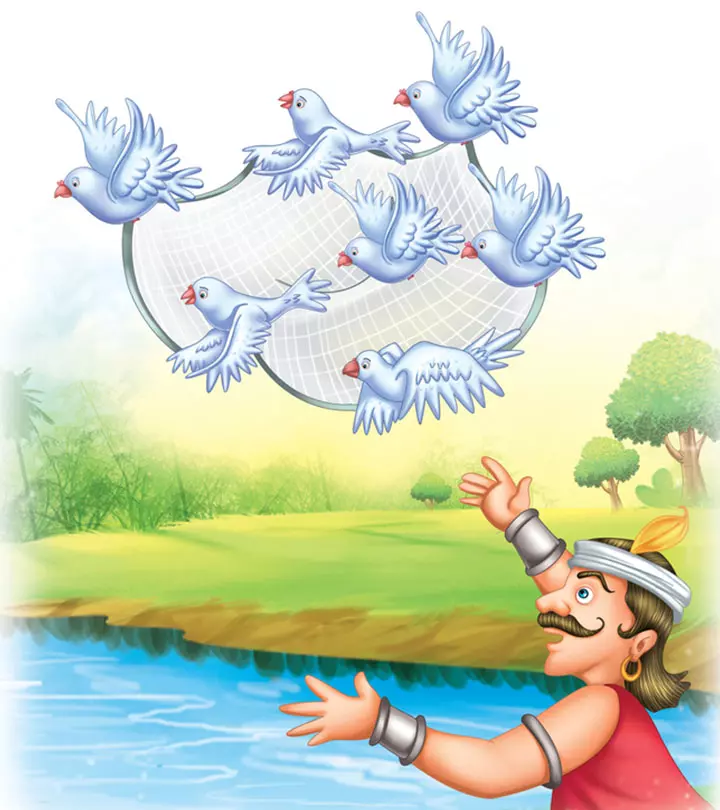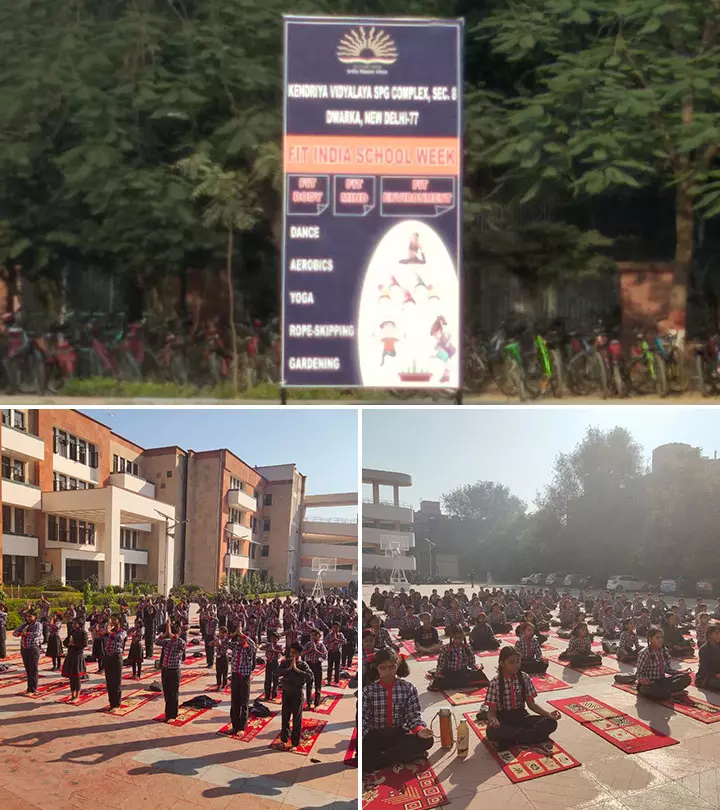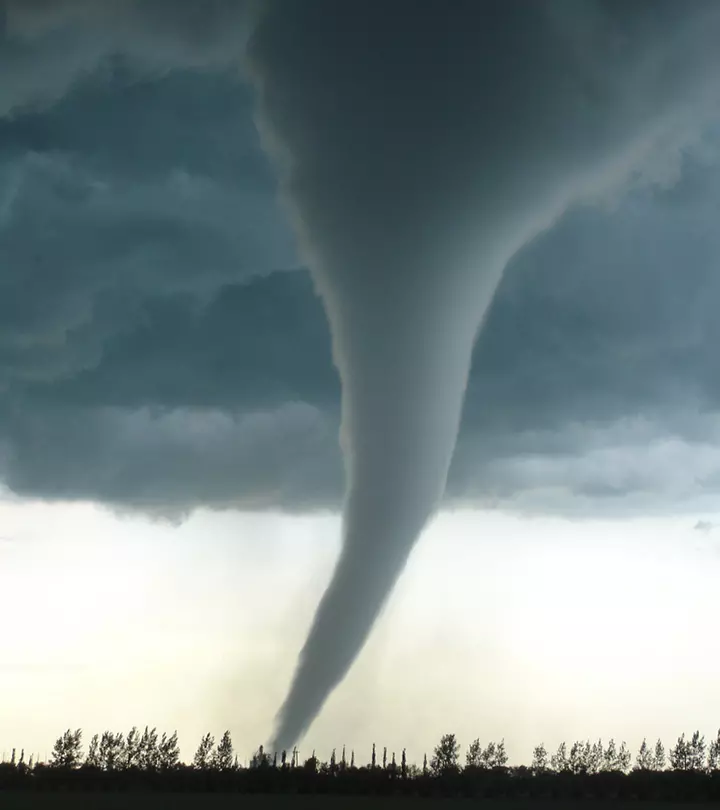
Image: iStock
Tornado facts for kids would leave them amazed about nature and help them exhibit caution. Tornadoes or twisters are nature’s most powerful storms that can destroy buildings, flip cars, and uproot trees (1). They are rotating, cone-shaped clouds extending from a thunderstorm to the ground. The whirling winds can reach a speed of 300 miles per hour and damage an area around 50 miles long and one mile wide. They hit quickly without much warning that the wind dies down, and the air becomes still before they arrive (2). MeteorologistsiAn expert who studies processes that control weather and climate, and the predicts future weather patterns detect an approaching tornado with the help of a Doppler radar (1). Read the post to learn essential and interesting facts about tornadoes for kids.
Key Pointers
- Tornadoes can destroy anything in their path as they are nature’s most powerful storms with winds reaching up to 300 miles per hour.
- Tornadoes are formed by the combination of warm and humid air with cool and dry air.
- Prepare your family in advance for tornadoes by discussing them and practicing tornado drills with your children. It is also essential to build an emergency kit.
- During a tornado, protect your head at all times and seek shelter in the basement, cellar, or lowest floor of a sturdy building.
- Involve your children in the cleanup process, use protective footwear, and calm their nerves by talking to them and helping them overcome negative emotions.
Causes Of A Tornado
According to meteorology or atmospheric science, tornado formation happens when a region receives cool, dry air; warm, dry air; and warm, moist air combinedly. They always start with a thunderstorm that forms when the warm, moist air rises above and mixes with the cool, dry air (1).

- This storm turns strong when the wind at a higher altitude has more speed and a different direction than the wind at a lower altitude. The phenomenon is called wind shear, and it tilts and rotates the storm.
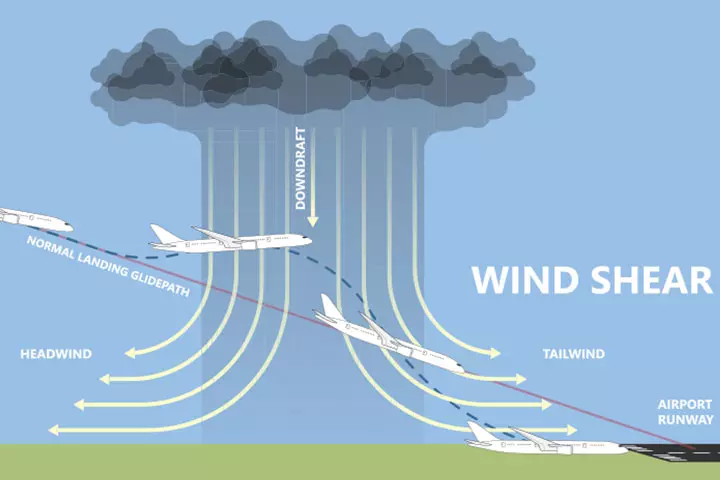
- If a storm becomes intense, it takes up more warm air into the storm cloud. Meanwhile, the cool air below gives rise to a small wall cloud.
- A funnel cloud is formed inside the wall cloud, extending to the ground and rotating the air on the ground.
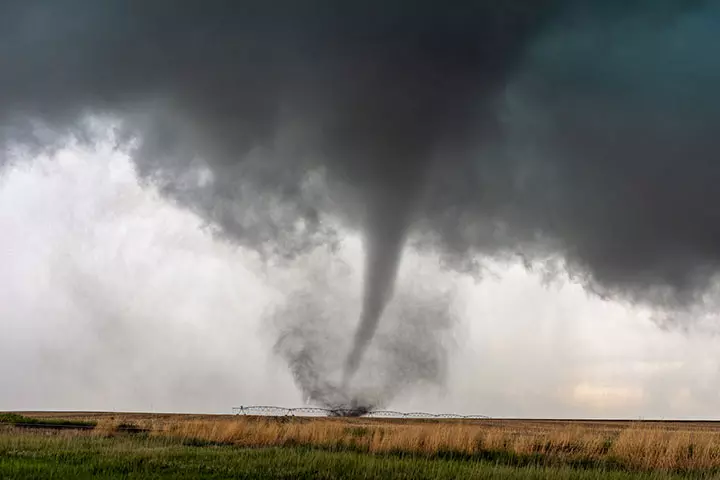
- When this rotating air on the ground meets the funnel cloud, it forms a tornado.

- When the updrafts start losing their energy, the tornado disappears. Tornadoes build up and disappear quickly, most of them lasting for less than 15 minutes (3).
 Did you know?
Did you know?Tornado Safety For Kids
Tornadoes are destructive, therefore, it is essential to stay safe and alert.
Check on a tornado watch and a tornado warning. A tornado watch indicates the possibility of a tornado, while a tornado warning indicates if the tornado has approached or is approaching soon. In case of a tornado warning, you should soon go to a safe place to avoid being in the path of tornado damage and destruction (4).
An anonymous blogger with the username LanaiLens shares her experience of facing a tornado as an eight-year-old child in school. She writes, “….we were all shuffled into the storm shelter in the basement, walking past the windows the skies now held a very eerie greenish hue and all seemed frighteningly still outside… I remember other kids around me on that floor being afraid, and teachers singing to try to ease some of the fright.
“Then the tornado hit the school. Yes, I can tell you that a tornado does in fact sound just like a freight train coming through… When I heard that sound, I looked up. It was as if everything was in slow motion, everyone, including the teachers had their heads down, sitting indian style in rows on the floor. The air above our heads seemed to me to be almost like a fog, the dust and whatnot were stirred up so much… The lights began to flicker, then went out, plunging us into darkness. That was when my fear kicked in full force, but only because I am to this day deathly afraid of the pitch black darkness (i).”
A tornado can be frightening, but if you know how to protect yourself, you will be safe. The following are some safety measures you should take before, during, and after a tornado (2) (5) (6).
Before a tornado
- Talk to your family about tornadoes and accompanying severe weather conditions. Discuss how it occurs and what you can do to stay safe. Use simple words to explain the concept to your children.
- Teach the warning signs to your children: dark, green sky; large, low-lying clouds; large hail; and a loud roar.
- If your children go to a school or daycare center in a tornado-prone area, check the center’s emergency preparedness and plan. Discuss this plan with your children too.
- Practice tornado drills with the family because these will help you to reach a safe spot in less time when a real emergency arises.
- Build an emergency kit, including food and water to last for at least three days, medications for seven days, essential documents, radio, batteries, pet essentials, and helmets for adults and children.
During a tornado
- If you are in a building, seek shelter in the interior part of a basement or storm cellar. If a basement is not available, stay in the interior part of your house with no windows, even a bathroom or a wardrobe.
- Wear sturdy shoes and protect your head with a helmet or lie under something sturdy, such as a table.
- If you are outside the house or live in a mobile home, seek shelter on the lowest floor of a strong building.
- If there are no buildings in the vicinity, lie flat and cover your head and neck with your arms.
- If you are in a vehicle, put your head below the window and cover it with a cushion or blanket.
- Stay calm and provide simple instructions to children. Use distracting activities to comfort them.
After a tornado
- Stay informed to get the latest news about tornadoes.
- After the tornado, involve your children in the cleaning-up or disaster relief activities.
- Wear sturdy shoes during clean-up as there might be pieces of glass or nails on the ground.
- Do not touch any loose or broken power line.
- Talk to your children and help them express their feelings. Help them overcome any negative emotions. Assure them that the situation is not permanent and can be handled with proper awareness.
- Perform model effective stress handling techniques in front of children.
- Continue your family routine as usual in the recovery phase.
- Seek help if children’s reactions worsen or persist for six weeks after the tornado’s arrival.
Tornado Drills For Kids
While learning tornado facts for kids is fun, experiencing a tornado in real life is scary. It is paramount that children know how to stay safe during a tornado, and the best way to ensure that is to implement tornado drills at schools. Here is how these drills are usually done.
Before the drill
- Explain the purpose of the drill to the kids calmly and reassuringly.
- Identify the safe areas in the school building. Typically, the innermost rooms on the lowest floor of the building, devoid of windows, are the safest. These include bathrooms and closets (21).
- Show kids the way to protect themselves. Teach them to crouch low, face down, and cover their heads and necks with their arms or a sturdy object.
- Most importantly, let them listen to tornado alarm sounds so they can recognize it.
During the drill
- Use a whistle, alarm, or siren sound to signal the start of the drill.
- Move to the designated safe area quickly by walking swiftly yet calmly.
- Make the kids crouch low, face down, and cover their heads and necks to protect themselves.
- Teach the kids to remain quiet and wait for further instructions.
- After a set time, end the drill and allow the kids to resume their normal activities.
After the drill
- Discuss what went well with the children and ask them what can be improved.
- Let the kids ask any questions they are unsure about to ease their anxiety.
- Repeat the tornado drill several times a year to reinforce the habits, especially if you are located in a tornado-prone area.
20 Informative Facts About Tornadoes For Kids
Here are some informative and fun facts about tornadoes that will leave your children awestruck.
- Tornadoes can occur at any time, but they are most common between 3 pm and 9 pm from March to August (2).
- Although tornadoes may occur anywhere globally, they are most common in the Tornado Alley, consisting of Minnesota, Ohio, Kansas, Louisiana, Oklahoma, Texas, South Dakota, North Dakota, Arkansas, Kansas, and Nebraska (2).
- Tornadoes or windstorms are destructive because the debris picked up by them acts as projectilesiAn object thrown into air on which that works as a self-propelling weapon . Since tornadoes pick up many small and oversized items, including trees, cars, and glass, they cause significant destruction when they fall on a building or back to the ground (7).
- Supercell thunderstorms cause the most dangerous tornadoes. These storms have a rotating updraft called the mesocyclone, producing an anvil-shaped cloud (7).
- Tornadoes lead to around 70 deaths and 1,500 injuries every year in the US (8).
- Tornadoes are mostly transparent before picking up dust and debris or forming a cloud inside the funnel (8).
- Tornadoes that build over warm water are called waterspouts. They can move onshore and damage the coastal areas (8).
 Quick fact
Quick fact- Extremely violent tornadoes can blow away any house and the people inside it. However, they are rare. The last catastrophic tornado occurred in Moore, Oklahoma, on May 20, 2013 (9).
- America faces the largest number of tornadoes globally, recording around 1000 tornadoes each year (10).
- Tornadoes are of three types–multiple vortex, landspout, and waterspout (10).
- The intensity and damage of tornadoes are measured by the Enhanced Fujita Scale or the EF-Scale, established by Tetsuya Theodore (Ted) Fujita, a Japanese-American severe storms researcher (10). On this scale, EF0 signifies a mild tornado, while the highest reading, EF5, denotes storms with wind speeds over 200 mph (19).
- While the terms hurricanes and tornadoes are sometimes used interchangeably, they are not the same. Hurricanes form over the water, while tornadoes form over the land (10).
- Sometimes tornadoes are not visible because of heavy rain or low-hanging clouds (3).
- In recent years, the frequency of days on which tornadoes occur has decreased, but the frequency of tornadoes in a day has increased. The strength and distribution of tornadoes have also changed (11).
- Researchers are trying to find how climate change and global warming may affect the severity and location of tornadoes (11).
- GOES-R Series weather satellites of the National Oceanic and Atmospheric Administration (NOAA) are more efficient at predicting tornadoes than the previous satellites. GOES-R Series satellites can monitor the motion of the clouds, understand what is going inside them, and recognize a severe storm as it develops (12).
- As tornadoes cannot be prevented, developing better warning systems can help save many lives (12).
- After the tornado is over, it is preferable to text people on the phone rather than calling them so that the phone lines remain clear for the emergency workers (2).
- People living in the areas where tornadoes are common have been building storm cellars for generations. These cellars are used to seek shelter when a tornado hits (13).
- New construction techniques have also been developed to make stronger buildings that can resist tornadoes (13).
Tornado Pictures For Kids
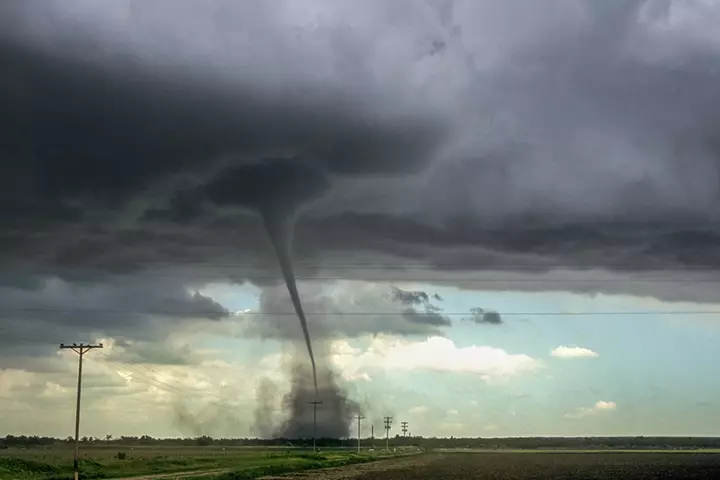

Tornadoes are severely destructive thunderstorms that can happen in any part of the world. Although catastrophic tornadoes cannot be managed by taking safety precautions, the good news is that most tornadoes are not severe, and people can save their lives if they stay alert and follow safety tips. However, the places falling under Tornado Alley are at greater risk because they provide the right conditions for a tornado to form. So, carefully follow the guidelines before, during, and after a tornado.
Tornado Sounds And Seismology
Tornadoes make different sounds, like a whooshing roar or a freight train, caused by various factors. Some tornadoes sound like a nearby jet engine or rushing water, while others sound like a deep rumble. These noises come from the tornado’s winds, turbulent eddies, and interactions with the surface and debris. Funnel clouds also create sounds, such as whistling or buzzing like bees. While some tornadoes can be heard from a distance, sound isn’t a reliable warning. Severe thunderstorms can also produce similar noises. Tornadoes make inaudible infrasonic signatures, and scientists are working on devices to predict and understand tornadoes better, including their seismic signatures.
Myths About Tornadoes
While teaching facts about tornadoes is important, you must also debunk myths about them so children do not fall for misleading information. Here are some myths to watch out for (20).
- Tornadoes only occur in the spring and summer: Tornadoes are not season-specific and can occur anywhere and anytime. However, there are some regions more prone to having them.
- Tornadoes only travel in the northeast direction: Tornadoes can travel in any direction, so the commonly heard safety tip about seeking shelter in the southwest corner of your house is incorrect.
- Tornadoes are hindered by large buildings, cities, lakes, mountains, and river valleys: Tornadoes cannot be stopped or derailed by natural or man-made structures. Several large cities in the US have been hit by tornadoes, and they have crossed over lakes, rivers, and mountains, too.
- Tornadoes do not strike more than once: As per records, tornadoes have struck the same location in consecutive years, and more than once in a single day.
- One can seek shelter under an overpass during a tornado: It is dangerous to hide under a bridge or overpass during a tornado as debris can strike you from any direction, or the bridge itself may fall.
- Opening windows during a tornado can help equalize pressure in the house: This is a dangerous myth that can cause further damage by getting you injured with flying broken glass and other debris.
- A tornado’s shape and size determines its strength: Tornadoes come in many shapes and sizes, but their intensity, based on their EF Scale reading, determines how destructive they will be.
Frequently Asked Questions
1. Does a tornado have rain?
Yes, tornados sometimes carry rain. However, most often, it carries thunderstorms and hailstormsiA storm that is characterized by the falling of tiny ice balls (14).
2. Can one breathe in a tornado?
Yes, you can breathe in a tornado. However, it will be as difficult to breathe in a tornado as at an altitude of 8,000 m (26,246.72 ft) (15).
3. Where did the tornado get its name?
The word ‘tornado’ was derived from the Spanish word ‘tronada,’ which means thunderstorm, and ‘tornar,’ meaning ‘to turn over.’ These Spanish words also come from the Latin word ‘tonare,’ meaning ‘to thunder’.
4. How tall are tornadoes?
In the US, most tornadoes are around 500 feet tall. However, strong tornadoes can easily surpass the height of 45,000 feet.
5. Can a tornado freeze?
No, tornadoes do not freeze. But in the eye of a tornado, the air density is low and has near freezing temperatures and conditions.
6. Are tornadoes good for Earth?
No, tornadoes are not found to benefit the Earth in any way. It is one of the natural disasters and brings damage and destruction.
7. Who first discovered tornadoes?
The first possible tornado was reported by Massachusetts Governor John Winthrop in July 1643 in Lynn, Newbury, and Hampton, Massachusetts, the US (16).
8. Can you survive in the eye of a tornado?
Yes, one can survive in the eye of the tornado, but If you get caught up in a tornado, all the flying debris and strong winds can make survival difficult (17).
9. Why do my ears pop in a tornado?
Due to a sudden drop in air pressure in and around the tornado, you can feel your ears popping (18).
Involve your children in the discussion and keep them informed about the situation. Since children may be physically and emotionally affected by natural disasters, it is essential to support and counsel them regularly. As you help your child learn about natural disasters, introduce them to tsunami for kids as well. Also, do not hesitate to take professional help if you cannot manage the situation by yourself.
Infographic: Interesting Facts About Tornados And Safety Tips
Tornadoes are destructive whirling wind cones that are scary and intriguing. Knowing tornados can help you and your family be safe during an episode. Go through the infographic below for interesting facts about tornados and tips to ensure safety.

Illustration: Momjunction Design Team
Illustration: Interesting Facts About Tornadoes For Kids

Image: Stable Diffusion/MomJunction Design Team
Learn all about tornadoes with this fun and informative video for kids! Discover amazing facts about these powerful storms and stay safe!
Personal Experience: Source
MomJunction articles include first-hand experiences to provide you with better insights through real-life narratives. Here are the sources of personal accounts referenced in this article.
i. The Day I Learned to Fear a Tornado Revisited.https://lanailens.wordpress.com/2012/05/04/the-day-i-learned-to-fear-a-tornado-revisited/
References
- Tornadoes: Spinning Thunderstorms.
https://www.amnh.org/explore/ology/earth/tornadoes-spinning-thunderstorms - Tornadoes.
https://aging.networkofcare.org/lrgv-tx/HealthLibrary/Article?docType=ka-noc-106-Natural%20Hazards&articleId=1955 - Tornado Definition.
https://www.weather.gov/phi/TornadoDefinition - Tornado Safety.
https://www.redcross.org/get-help/how-to-prepare-for-emergencies/types-of-emergencies/tornado.html - 10 Tornado Safety Tips to Keep Kids Safe.
https://www.savethechildren.org/us/what-we-do/disaster-relief-in-america/tornado-tips-for-parents - Tornado Resources.
https://www.nctsn.org/what-is-child-trauma/trauma-types/disasters/tornado-resources - Tornado facts: How they form and how to prepare.
https://www.worldvision.org/disaster-relief-news-stories/tornado-facts#destructive - Tornado Facts and History.
https://stormaware.mo.gov/tornado-facts-history/ - May 2013 Tornadoes Report.
https://www.ncei.noaa.gov/access/monitoring/monthly-report/tornadoes/201305 - Fun Facts on Tornado.
https://www.fun-facts.org.uk/earth/tornado.htm - Tornadoes and Climate Change.
https://www.c2es.org/content/tornadoes-and-climate-change/ - How Do Tornadoes Form?
https://scijinks.gov/tornado/ - Tornadoes.
https://www.noaa.gov/education/resource-collections/weather-atmosphere/tornadoes - Why Talk About Tornadoes?
https://www.disastercenter.com/guide/tornado.html - It’s freezing inside… that tornado?
https://www.concordia.ca/cunews/main/releases/2017/01/17/freezing-inside-that-tornado-research-why-temperatures-drop-inside-vortex.html - History of Tornado Forecasting.
https://celebrating200years.noaa.gov/magazine/tornado_forecasting/ - NOAA Webinar Series FAQ.
https://seagrant.whoi.edu/wp-content/uploads/2020/05/NOAA-Webinar-Series-Tornado-FAQ.pdf - Tornado Safety.
https://www.weather.gov/media/lsx/wcm/Tuesday_17.pdf - The Enhanced Fujita Scale (EF Scale).
https://www.weather.gov/oun/efscale - Severe Weather Awareness – Common Tornado Myths.
https://www.weather.gov/mkx/taw-tornado_myths - Tornado Drill for Schools.
https://www.weather.gov/media/sjt/pdf/swaw17web2.pdf
Community Experiences
Join the conversation and become a part of our nurturing community! Share your stories, experiences, and insights to connect with fellow parents.
Read full bio of Theresa Bertuzzi
Read full bio of Pragya Bhargavi
Read full bio of Harshita Makvana
Read full bio of Trisha Chakraborty













